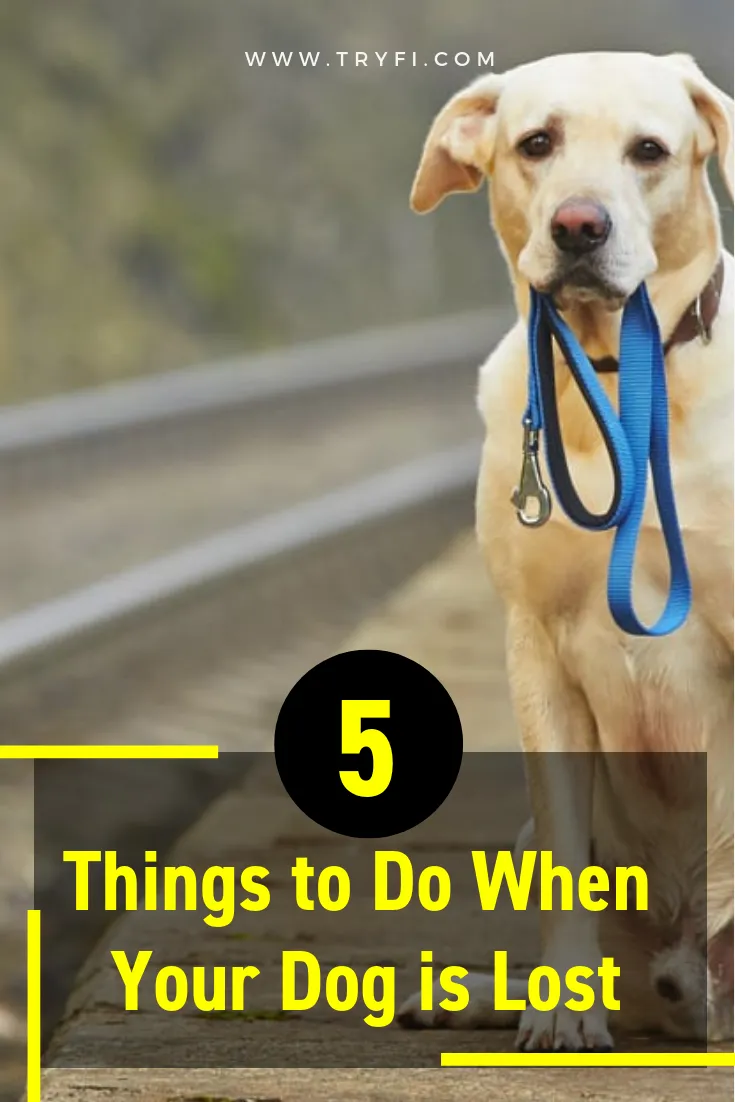It is every pet owner’s worst nightmare: that sinking feeling as you watch your dog run off without you, ignoring your calls for him to come back. Losing a dog is a scary thing, but there are steps you can take to improve your chances of finding your dog as quickly as possible.
#1. Don’t Panic
Your instinct may be to run after your dog screaming for him to come back – resist that urge! An anxious dog will be frightened by the commotion, and an outgoing dog may see it as part of the game. In both cases, you may inadvertently push your dog to continue running away from you.
Instead, pause for a moment and take a deep breath. Gather a few supplies if you have them handy, such as a leash to use when you catch your dog and some tempting treats to entice him to come to you. Calmly walk in the direction where you last saw your dog, and call him with a light, upbeat tone.
If you encounter anyone else while you are looking for your dog, ask them if they saw which way he was headed. Give them a brief description of him and your phone number so they can contact you if they spot him. If possible, have a friend stay at the spot where he was last seen, in case he decides to circle back once he is finished chasing that squirrel.
#2. Update Your Dog’s Microchip Information
If your initial search turns empty, the first thing you need to do is update your dog’s microchip information. Many owners microchip their pets, but then forget to register the microchip and keep their contact information up to date. Your microchip is typically registered with the company that manufactured it.
If you have forgotten the name of the company, don’t worry! There are plenty of free registries available, which you can find through a simple Google search. If you don’t have your dog’s microchip number, try contacting your veterinarian. Your dog’s microchip information is often included as a part of his medical record.
If the microchip was placed before you acquired your dog, you can also try calling the shelter, breeder, or rescue where you obtained him. Microchips reunite thousands of pets with their owners every year, so be sure to keep your associated contact information up to date!
#3. Spread the Word
The more people are keeping a lookout for your dog, the more likely it is he will be found and returned to you! Put together a poster including his name, recent photo(s), your contact information, and a description of him, including any distinctive markings. Share this information as widely as you can.
Call your local shelters, animal control officers, veterinary clinics, and rescues to let them know your dog is missing. Reach out to organizations in surrounding towns as well. Wallpaper your neighborhood with fliers. Have a friend or family member go door-to-door in the area where your dog was lost, handing out fliers and encouraging neighbors to call you with sightings.
Remind everyone not to chase your dog; even friendly dogs can be very frightened when lost, and may be pushed father away by people trying to catch them. Instead, encourage everyone to call you immediately if they see him. They can also try to entice him with food, but they should not attempt to catch him unless he approaches them first.
#4. Keep Track of Sightings
Within a few days, a lost dog will typically establish himself in a particular area and will begin to set up a pattern of eating, sleeping, and hiding. This is why it is so important to spread the word and encourage your neighbors to call you with sightings. If you can determine the general area where your dog is hiding and the times he prefers to come out, you may be able to catch him.
Again, do not try to chase your dog if you spot him. Lost dogs can be so scared that they don’t recognize their owners at first, and the last thing you want to do is push him farther away. Instead, sit quietly and wait for him to make an appearance. If you see him, try to lure him to come to you by tossing treats in his direction. If he won’t come to you, that’s okay.
Now that you know where he likes to hang out, your local animal control officer or lost dog rescue group can help you set up a feeding station. This will encourage him to keep returning to the same spot, where he can then be safely trapped.
#5. Don’t Lose Hope
Losing a dog is devastating, but do not give up hope. Our domestic dogs are often much hardier than we expect. There are many stories of dogs that have been missing for months or even years that finally returned to their owners. Continue to spread the word about your dog and stay in touch with your local animal control and other organizations.
Use social media to keep your friends and neighbors up to date. Make sure everyone knows that your dog is still missing, even if it has been months since his last sighting. You may feel like you are harassing everyone, but staying vigilant can be the key to getting your dog home safely.
When You Find Your Dog
Finding your lost dog is undoubtedly a moment of joy and profound relief. But, it is important to remember that the adventure does not end there. If your dog looks sick or injured, or if he has been missing for more than 24 hours, bring him to a veterinarian for a full examination to ensure he has not suffered any harm during his ordeal. This is also a good time to have your veterinarian place a microchip if your dog does not already have one.
You may also want to consider purchasing a GPS collar – such as the Fi smart collar – to help you keep track of your dog in the future. Finally, take some time to evaluate the situation that lead to your dog getting lost in the first place. Was he off-leash? Did something startle him? Learning from your previous mistakes and taking appropriate preventive steps can help ensure your dog never gets lost again.


